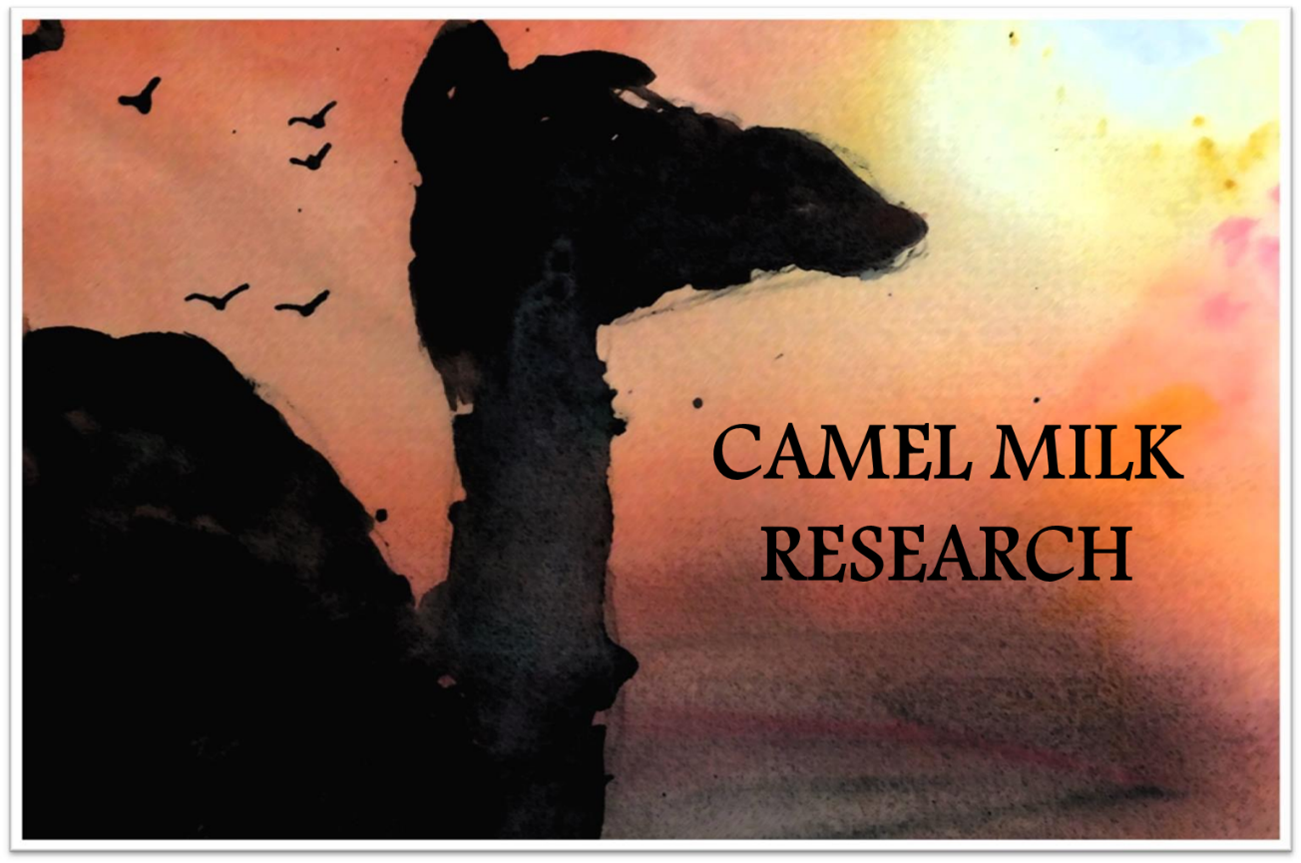
Picture courtesy: Sakina Kamal-Eldin
Year 2010, I moved from the Swedish University of Agricultural Sciences (SLU), Uppsala, Sweden to the University of United Arab Emirates, AlAin, UAE. Here, I started new research interest focusing on food security resources in the country with the aim to add value and contribute to the use and sustainability of these resources. Camel milk is a very important food resource and researching camel milk composition, structure, and properties is interesting because this milk is very different from cows’ milk. Camel milk does not coagulate to form solid forms of cheese and yoghurt as cow milk. Most importantly, camel milk has been shown to have antidiabetic, hypoallergic, anticarcinogenic, and beneficial effects on food digestibility in autistic children. The exact chemistry behind these differences is not yet known.
PhD student Huda Mohamed studied the protein composition of camel milk and compared it with that in cow milk. She found that the proximate composition of camel milk is comparable to that of cow milk, i.e. proteins (2.4-4.0%), fats (1.2 -7.3%), lactose (3.0-5.7%) and total solids (9.1 -15.2%) (1). However, the camel milk have important differences in the protein composition, most importantly the absence of the important whey protein b-lactoglobulin in camel milk and the different proportions of αS1-, αS2-, β-, and κ-caseins (26:4:67:3, wt/wt) compared to bovine milk (38:10:36:12, wt/wt) (2). Moreover, the concentrations of the bioactive proteins, namely insulin, insulin-like growth factors I and 2, lactoferrin, immunoglobulin G, peptidoglycan recognition protein-1, lysozyme, and lactoperoxidase were higher in camel milk (3). The implications of these compositional differences are still to be revealed.
PhD student Mustapha Mbye conducted research with the aim to understand the softness of camel milk cheeses produced by the use of acids and enzymes (4-6). He found that camel milk and cheeses produced therefrom are characterized by increased proteolysis compared to cheeses produced from cow milk (5,6). He also found that low heat treatment and high pressure processing of camel milk increase the hardness of the camel milk cheese.
We have published a number of articles on camel milk yoghurts, which have a very thin consistency and lower viscosity compared to the set yoghurts from the cow (7-10). Fortification of camel milk with camel and cow milk proteins increases the total solids in the yoghurts and leads to minor improvements in the product quality (7-9). Our research shows that some of the native components in camel milk have an anti-coagulation activity (10). These components and their mechanism(s) of action are still to be studied. However, camel milk is suitable for the manufacture of drinkable yoghurt (laban), which is expected to have health potentiating effects.
Publications
- Mohamed, H., Nagy, P., Agbaba, J., and Kamal-Eldin, A. (2021) Use of Near and Mid Infra-Red Spectroscopy for Analysis of Protein, Fat, Lactose, and Total Solids in Raw Cow and Camel Milk. Food Chemistry 334: 127436. Doi: 1016/j.foodchem.2020.127436
- Mohamed, H., Johansson, M., Lundh, A., Nagy, P., and Kamal-Eldin, A. (2020) Caseins and a-Lactalbumin Content in Camel Milk (Camelus Dromedarius) Determined by Capillary Electrophoresis. Dairy Science 103: 11094-11099. DOI: 10.3168/jds.2020-19122
- Mohamed, H., Ranasinghe, A., Amir, N., Nagy, P., Gariballa, S., Adem, A., and Kamal-Eldin, A. (2021) Variability of Bioactive Proteins in Camel Milk (Camelus dromedarius): Insulin, Insulin-Like Growth Factors, Immunoglobulin G, PGRP-1, Lysozyme, and Lactoperoxidase, manuscript
- Mbye, M., Sobti, B., Al Nuaimi, M. K., Al Shamsi,, Al Khateri, L., Al Saedi, R., Saeed, M., Ramachandran, T., Hamed, F., and Kamal-Eldin, A. (2020) Physicochemical Properties, Sensory Quality, and Coagulation Behavior of Camel versus Bovine Milk Soft Unripened Cheeses. NFS Journal 20: 28-36. DOI: 10.1016/j.nfs.2020.06.003
- Mbye, M., Mohamed, H., Ramachandran, T., Hamed, F., AlHammadi, A., Kamleh, R., and Kamal-Eldin, A. (2021) Effects of Pasteurization and High-Pressure Processing of Camel and Bovine Milk on Cheese Quality and Proteolysis Contribution to Camel Cheese Softness. Frontiers in Nutrition 8: 642846. DOI: 10.3389/fnut.2021.642846.
- Mbye, M., Mohamed, H., Abdul Raziq, and Kamal-Eldin, A. (2021) The Effect of Camel Chymosin and Withania coagulans Extract on Camel and Bovine Milk Cheeses. Scientific Reports 11: 1-14. https://doi.org/10.1038/s41598-021-92797-6
- Sobti, B., Al Teneiji, H. A. A., and Kamal-Eldin, A. (2019) Effect of added Bovine Casein and Whey Protein on the Quality of Camel and Bovine Milk Yoghurts. Emirates Journal of Food & Agriculture 31: 804-811. DOI: 9755/ejfa.2019.v31.i10.2022
- Sobti, B., Mbye, M., Alseraidy, H., Alketbi, H., Alshamsi, A., Almeheiri, M., Alnaqbi, A., Kamal-Eldin, A. (2020) Rheological and Sensory Analysis of Camel milk Yogurt Fortified with Different Additives. International Journal of Food Properties 23: 1347-1360. DOI:1080/10942912.2020.1797785
- Sobti, B., AlJuneibi, A. H., Seraidy, H. A., AlNaqbi, A. A., Al Zain, B., Ramachandran, T., Hamed, F., and Kamal-Eldin, A. (2021) The Effect of Pectin and Sodium Alginate on Camel and Bovine Milk Labans. Journal of Dairy Science 104: 5279-5284. Doi: 10.3168/jds.2020-19220.
- Kamal-Eldin, A., Al Hammadi, A., Gharsallaoui, A., Hamed, , and Ghnimi, S. (2020) Physicochemical, Rheological, and Microstructural Properties of Yogurts Produced from Mixtures of Camel and Bovine Milks. NFS Journal 19: 26-33. DOI: 10.1016/j.nfs.2020.05.001
